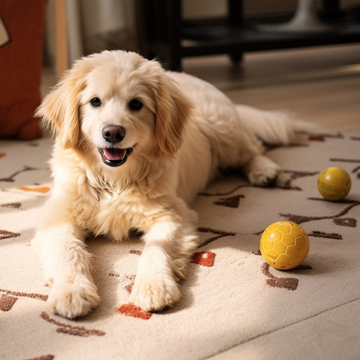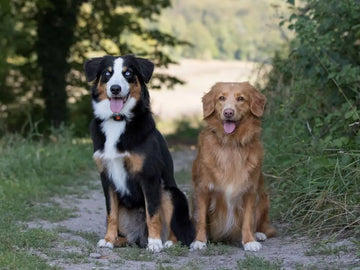Grooming your dog at home is a rewarding and cost-effective way to maintain your pet’s health and appearance. Regular grooming not only enhances the look of your dog but also promotes its overall well-being. Whether you're a new dog owner or a seasoned one, learning how to groom your dog at home can be an enjoyable bonding experience. In this article, we will walk you through the essential tools, steps, and techniques for grooming your dog effectively, while ensuring their comfort and safety.
Essential Grooming Tools
Before you start grooming your dog, it’s important to gather the necessary tools. Having the right grooming supplies is essential to ensure a successful grooming session and prevent any discomfort for your dog. Here’s a breakdown of some of the essential grooming tools you’ll need:
-
Brushes: Brushes come in different types depending on your dog’s coat. If your dog has long hair, you’ll need a slicker brush or a pin brush. For short-haired dogs, a bristle brush will do the job. Brushes help to remove tangles and mats and maintain a shiny, healthy coat.
-
Combs: For dogs with more delicate coats or those prone to tangling, a comb can be useful to gently work through any knots or mats. Always choose a comb that suits the texture and thickness of your dog’s coat.
-
Nail Clippers: Keeping your dog’s nails trimmed is important to avoid pain or injury. There are various types of clippers available, including scissor-style clippers, guillotine-style clippers, and even electric nail grinders. Choose one that’s comfortable for you and safe for your dog.
-
Shampoos and Conditioners: Select a gentle, dog-specific shampoo based on your dog’s skin type. For instance, if your dog has sensitive skin, opt for a hypoallergenic formula. If your dog has long hair, consider a moisturizing conditioner to keep the coat soft and tangle-free.
-
Ear Cleaners: Clean ears are essential for preventing infections, especially for dogs with floppy ears. An ear cleaner designed for dogs can help maintain ear health and prevent build-up that can lead to infections.
-
Toothbrush and Toothpaste: Dental hygiene is often overlooked, but it’s crucial for your dog’s overall health. Brushing your dog’s teeth regularly helps prevent tartar buildup and bad breath.
If you’re looking for high-quality grooming products, finding the best dog supplies will help ensure your dog’s grooming sessions are smooth and effective. Investing in top-rated products will make the process more enjoyable for both you and your dog.
Steps for Grooming Your Dog at Home
Now that you’ve gathered all the essential tools, it’s time to begin the grooming process. Below are the detailed steps for grooming your dog at home.
1. Prepare Your Dog
Before you begin, it’s essential to create a calm environment. Some dogs are anxious during grooming, so it’s important to make the experience positive. Use treats and praise to create a calm, trusting atmosphere. Set up a clean, non-slip surface in a well-lit area where your dog feels comfortable. If your dog is particularly nervous, start with shorter grooming sessions and gradually increase the length as your dog gets used to the process.
2. Brushing and Combing
Begin the grooming process by brushing your dog’s coat. The type of brush you use depends on your dog’s coat length and texture. If your dog has a long or thick coat, use a slicker or pin brush to gently work through tangles and mats. Always brush in the direction of the fur growth to avoid discomfort. For short-haired dogs, a bristle brush works well to remove loose hair and keep the coat shiny.
For more tangled or matted areas, consider using a detangling comb. Always be gentle when working through knots to avoid pulling the hair and causing pain.
3. Bathing Your Dog
Bathing your dog is an essential part of grooming. Not only does it help remove dirt and odors, but it also promotes healthy skin and fur. Choose a dog shampoo that suits your dog’s skin type—whether they have dry, oily, or sensitive skin.
To bathe your dog, first, wet their coat using lukewarm water. Apply a small amount of shampoo and gently lather the coat, ensuring the shampoo reaches the skin. Rinse thoroughly to avoid residue buildup. Be sure to avoid getting shampoo in your dog’s eyes and ears. After rinsing, apply a conditioner if necessary, especially for long-haired dogs, to keep the coat soft and easy to manage.
4. Nail Trimming
Trim your dog’s nails regularly to prevent overgrowth, which can cause discomfort or even injury. To trim your dog’s nails, carefully hold the paw and clip the nail with a sharp pair of clippers. Be sure to avoid cutting too close to the quick, the pink part of the nail, as this can cause bleeding and pain. If you're unsure, it’s always safer to trim a little at a time and consult with a vet or professional groomer if you're worried about cutting too much.
5. Ear Cleaning
Cleaning your dog’s ears is crucial for preventing infections, especially for dogs with floppy or long ears. Use a dog-specific ear cleaner to gently wipe the inside of the ear with a soft cotton ball. Be careful not to push too deep into the ear canal. If you notice any unusual discharge, redness, or foul odor, it may indicate an infection, and you should seek veterinary advice.
6. Dental Care
Dental hygiene is an often-overlooked aspect of grooming, but it’s just as important as brushing your dog’s coat or clipping their nails. Plaque and tartar can build up on your dog’s teeth, leading to gum disease and other health issues. Use a toothbrush and toothpaste specifically designed for dogs to brush their teeth regularly. It’s important to use toothpaste that’s safe for dogs since human toothpaste can be harmful to them.
Dealing with Grooming Challenges
While grooming at home can be a fun and rewarding experience, some challenges may arise, especially if your dog is anxious or has a thick, difficult coat. Here are some tips to help you navigate these challenges:
-
Handling Grooming Anxiety: If your dog is afraid of grooming, try to desensitize them by starting with short, positive sessions. Use treats and praise to reward good behavior and avoid rushing the process. Gradually increase the time spent grooming as your dog becomes more comfortable.
-
Dealing with Thick or Matted Coats: Some dogs, especially those with long or thick coats, may develop mats that are difficult to remove. If your dog’s coat becomes heavily matted, you may need to use a detangling spray or seek professional grooming assistance. If you’re looking for a solution to remove hair more effectively, the Dog One-Button Hair Removal tool can help to efficiently remove loose fur and mats, making the process less stressful for both you and your dog.
Conclusion
Grooming your dog at home can be a fulfilling experience that strengthens your bond with your furry friend while ensuring their health and comfort. By following the proper steps and using the best dog grooming supplies, you can maintain a clean, healthy coat and prevent potential issues. Regular grooming also allows you to check for any signs of health concerns, such as skin infections or parasites, which might otherwise go unnoticed.
FAQ
1. How often should I groom my dog?
- The frequency of grooming depends on your dog’s breed and coat type. Long-haired dogs may need grooming every few days, while short-haired dogs can be groomed weekly.
2. Can I groom my dog if they are anxious?
- Yes, but it’s important to take your time and make the grooming experience as positive as possible. Start with short sessions and gradually increase the length.
3. What should I do if my dog has matted fur?
- If the mats are severe, it’s best to visit a professional groomer for assistance. For minor mats, you can try using a detangling comb or a specialized hair removal tool.
4. Is it necessary to bathe my dog?
- Bathing your dog regularly is important for cleanliness, but over-bathing can dry out their skin. Bath your dog every 4-6 weeks or as needed.
5. What products are essential for grooming my dog at home?
- Essential products include brushes, combs, nail clippers, dog shampoo and conditioner, ear cleaner, and a toothbrush. Ensure you’re using high-quality tools for a safe and effective grooming session.










